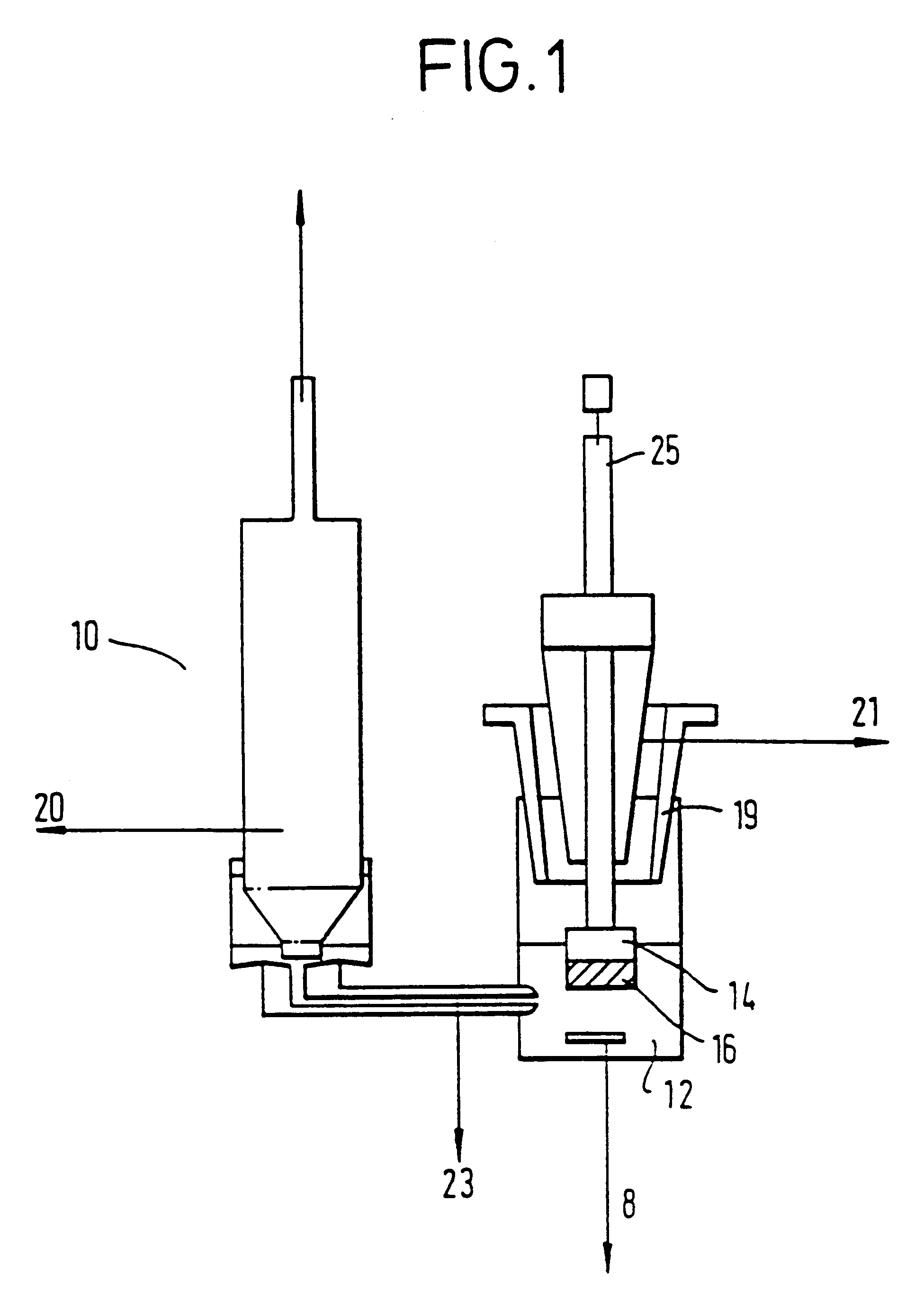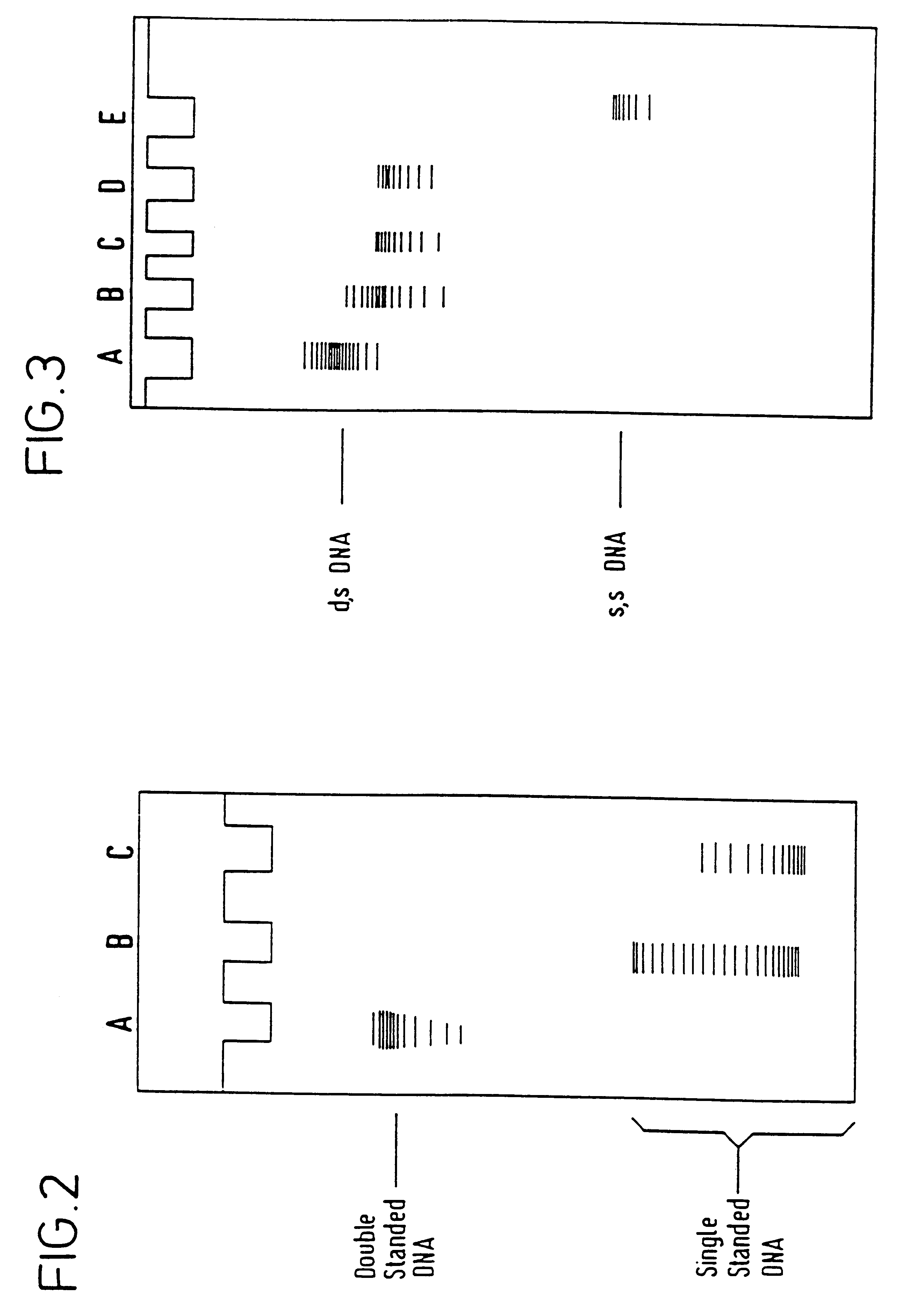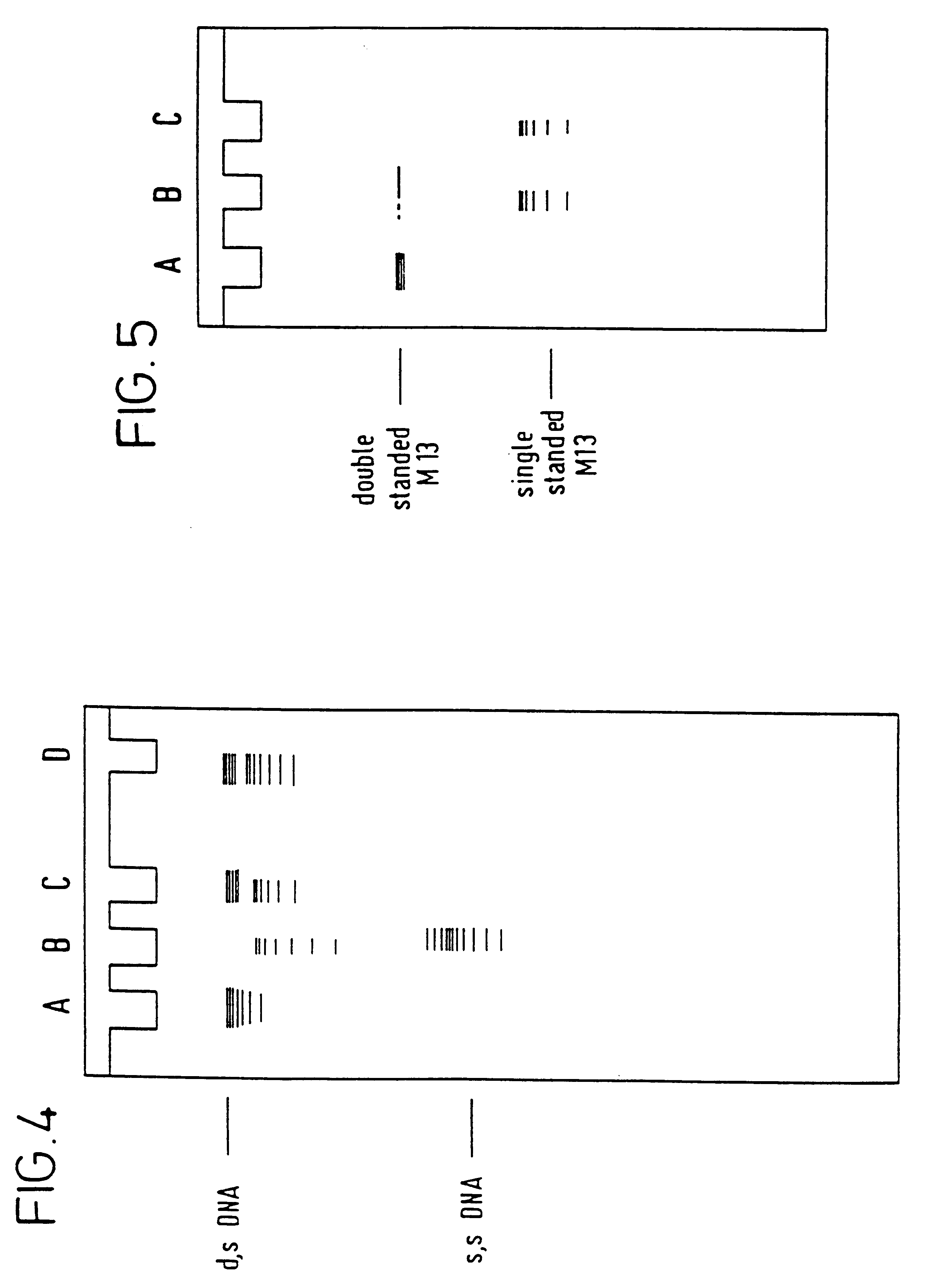Electrochemical denaturation and annealing of nucleic acid
a technology of electrochemical denaturation and nucleic acid, which is applied in the direction of biochemistry apparatus and processes, instruments, material analysis, etc., can solve the problems of limiting the speed at which the multiplication process can be carried out, limiting the design of new diagnostic formats, and destroying the structure of the dna itsel
- Summary
- Abstract
- Description
- Claims
- Application Information
AI Technical Summary
Benefits of technology
Problems solved by technology
Method used
Image
Examples
example 2
Example 1 was repeated as before, but DNA samples were taken after 15 minutes, 3 hours and 22 hours treatment in the electrochemical cell in order to provide a time course of the denaturation of the DNA. During sampling from the cell, the potentiostat was switched to a dummy cell represented by a resistor. A gradual progressive denaturation of the DNA into the faster migrating form on the gel was observed. The gel pattern after 15 minutes (not shown) is interpreted to represent a mixture of partially and fully denatured DNA but no evidence of wholly native DNA was seen and, in later samples, the proportion of fully denatured DNA continued to increase.
example 3
In a number of runs at varying promoter concentrations and at a fixed DNA concentration of 20 .mu.g / ml in the electrochemical cell and at an ionic strength of 15 mM to 150 mM the rate of DNA denaturation was found to be greatly accelerated by increasing the promoter concentration from 3 to 30 mg / ml. At the higher concentration, denaturation of the DNA was almost complete in 15 minutes only. In this example, the overwhelmingly predominant source of ionic strength is the promoter itself.
example 4
At a fixed promoter concentration of 3 mg / ml and at an ionic strength of 15 mM (derived essentially from the promoter) the rate of denaturation at various DNA concentrations was assessed. The results show that at 4 .mu.g / ml DNA the denaturation time was reduced to under 0.5 hours (as assessed by the disappearance of the double-stranded DNA band on the electrophoresis gel).
The foregoing examples demonstrate that the ratio of DNA to the promoter methyl viologen affects the rapidity and completeness of the denaturation of the DNA. These examples were carried out at low ionic strength in distilled water. Repeating these examples at higher ionic strength, i.e., 10 to 250 mM NaCl, lengthened the denaturation time of the DNA in solution by electrical means. This is attributed to the additional stabilization that salt provides to the double helical structure of DNA.
The foregoing examples have also been repeated following exactly the procedure described above for calf thymus DNA with other w...
PUM
| Property | Measurement | Unit |
|---|---|---|
| Electric potential / voltage | aaaaa | aaaaa |
| Electric potential / voltage | aaaaa | aaaaa |
| Electric potential / voltage | aaaaa | aaaaa |
Abstract
Description
Claims
Application Information
 Login to View More
Login to View More - R&D
- Intellectual Property
- Life Sciences
- Materials
- Tech Scout
- Unparalleled Data Quality
- Higher Quality Content
- 60% Fewer Hallucinations
Browse by: Latest US Patents, China's latest patents, Technical Efficacy Thesaurus, Application Domain, Technology Topic, Popular Technical Reports.
© 2025 PatSnap. All rights reserved.Legal|Privacy policy|Modern Slavery Act Transparency Statement|Sitemap|About US| Contact US: help@patsnap.com



